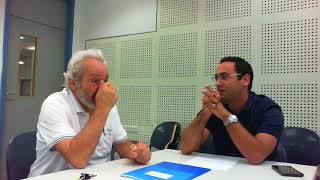Background (111-030-06-4)
Just before this clip the doctor was handing over his plan for the further investigation of the patient’s suspect cognitive decline. The patient has a family history of Alzheimer’s; has previously expressed his strong concern over forgetfulness to his doctor; and was recently hospitalized in an acute confusional state triggered by an infection. The hospital team suggested doing a cognitive work-up. A bit earlier in the interview the doctor had reassured the patient that his worst fears weren’t justified by the facts.
The action
In response to the doctor’s intention to refer him to a neurologist for his memory problems the patient states emotionally that he’s already not sleeping at nights for fear of having Alzheimer’s like his brother. The doctor again encourages him that based on the facts he can remain calm.
Educational opportunities
- This is a short clip demonstrating a number of the elements of CASE and cues, and response to cues.
- This clip could be discussed as well from the point of view of “bad news”: What elements of the recommended techniques for breaking bad news (for example “”spikes”) would be appropriate in this case, which of these are indeed used, and if not, how might they appear?
- For discussion: How does the doctor’s reassurance ring ? How does the patient seem to respond? What might have worked better? {Reflection, for example ].


